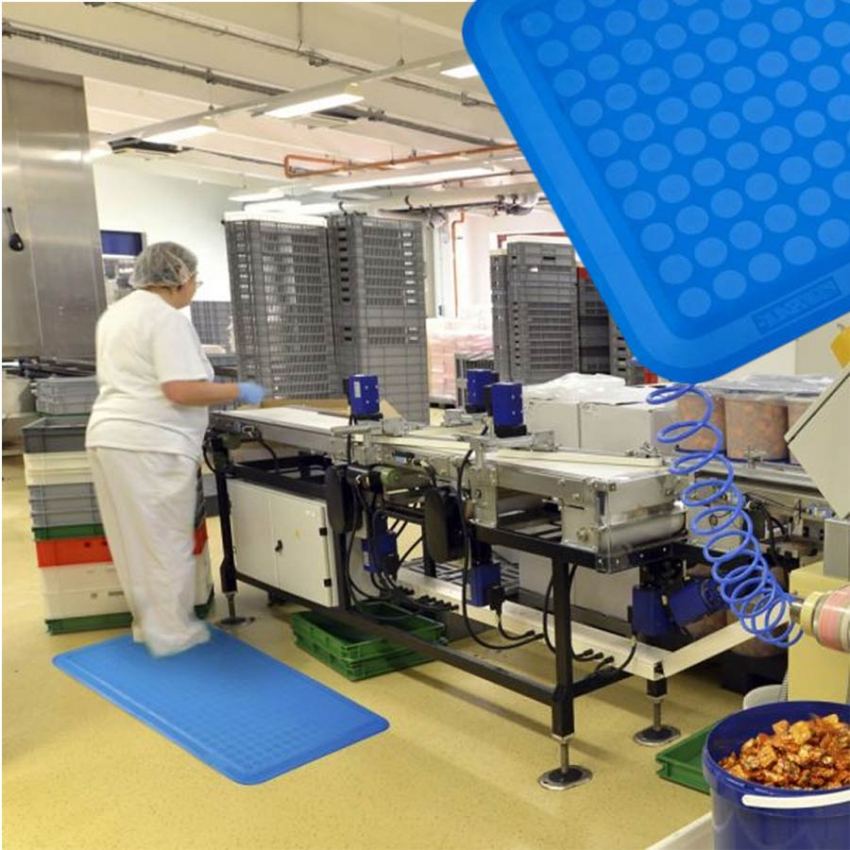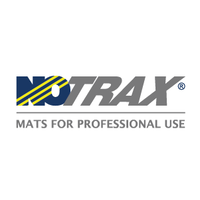










Individual mats - Intensive use - Wet, dry and greasy environments
Specially designed for thefood industry to comply with health and safety standards, this mat features ergonomic comfort for users and a non-slip surface thanks to its oil and grease-resistant 100% nitrile rubber.
Available in standard sizes.
- Ergonomic, anti-fatigue and safe
- Integrated edging on all four sides
- Cold-resistant
- Non-slip surface
- Long service life
- Anti-fatigue
- Easy to clean
RECOMMENDED APPLICATIONS:
Suitable for use in commercial kitchens, restaurants, refectories, cleaning/dishwashing areas...

| 526S1824BU |
Data sheet
| Format | Mat |
| Surface | granular |
| Location | Interior |
| Properties | Anti-fatigue Non-slip |
| Composition | 100% nitrile rubber |
| Thickness | 12.7 mm |
| Weight | 46 x 61 cm: 3,1 kg |
| Borders | With |
| Resistant to chemicals | Yes |
| Environment | Wetlands |
| Intensity of use | Intense |
| Wear index | 2/3 (Very good) |
Industrial mats meet the needs of ergonomic workstations and employee well-being.
They prevent:
There are many uses for industrial mats:
Safety criteria: The mat must cover the entire workstation, be firmly attached to the floor, not shift or slide, and have bevelled edges to prevent falls.
Thickness and flexibility criteria: Contrary to what you might think, you shouldn't choose a very thick or very soft mat. The mat should have a certain elasticity, but still allow a comfortable standing position, without the user feeling slumped.
Environmental criteria :
Environmental hazard criteria : To establish more precise characteristics for a mat (antistatic properties or fire resistance etc...) we need to take into account the hazards present in the environment where the mat will be installed.
Where hazardous liquids are present in the working environment, the anti-slip properties and chemical resistance of industrial mats should be taken into account. The presence of openings on mats to allow the evacuation of fluids is essential.
Traffic criteria: We need to take into account the traffic that takes place on the equipment: how many workers can walk on it? How often, etc., in order to choose the most suitable mat.
Prevent the many problems associated with poor workstation ergonomics: RSI, static shock, bacterial proliferation, etc.
We offer a wide choice of industrial mats: on rolls, in standard sizes, made-to-measure or modular mats to suit all types of workstations.